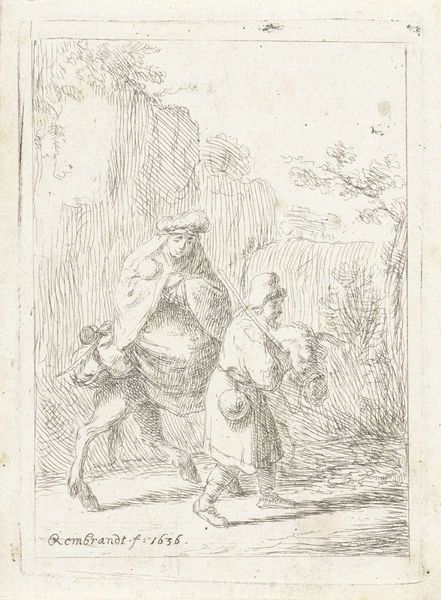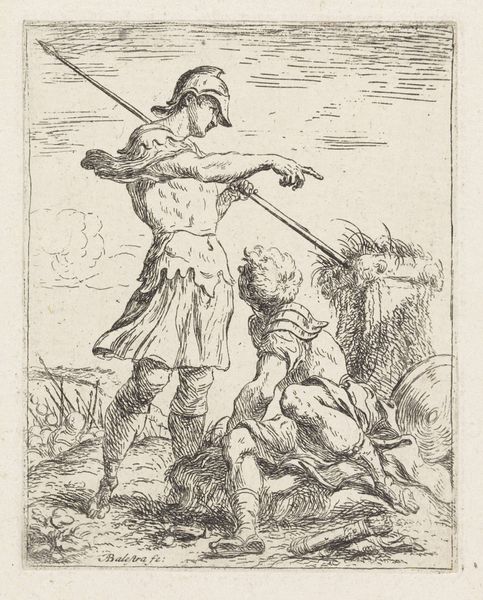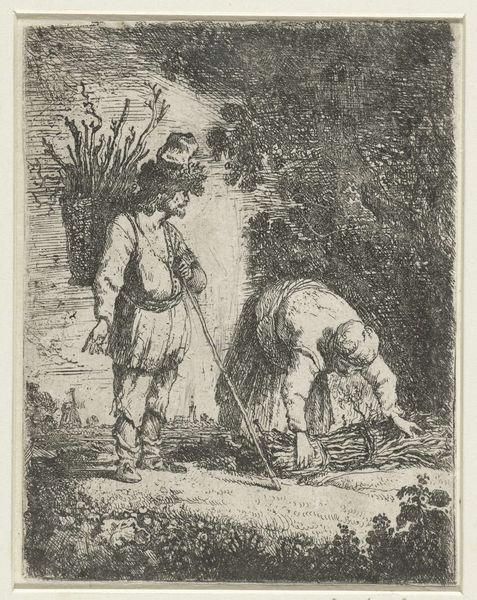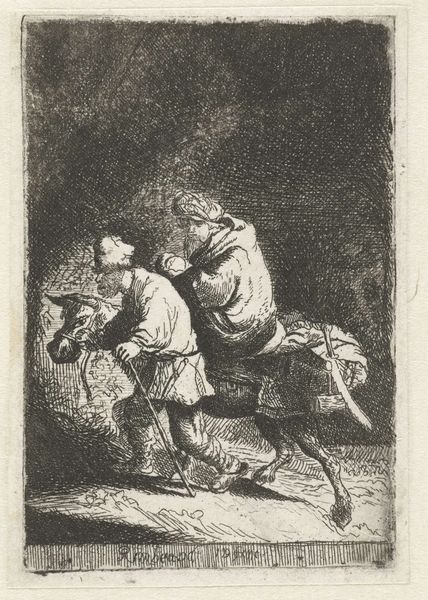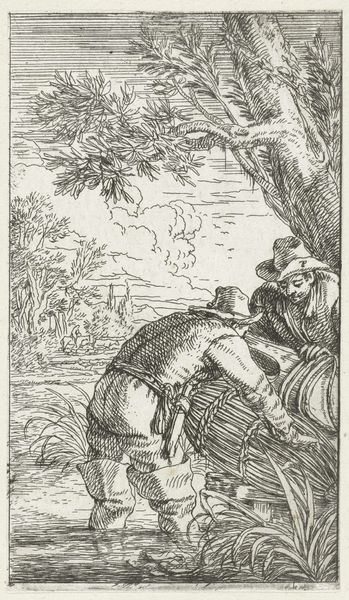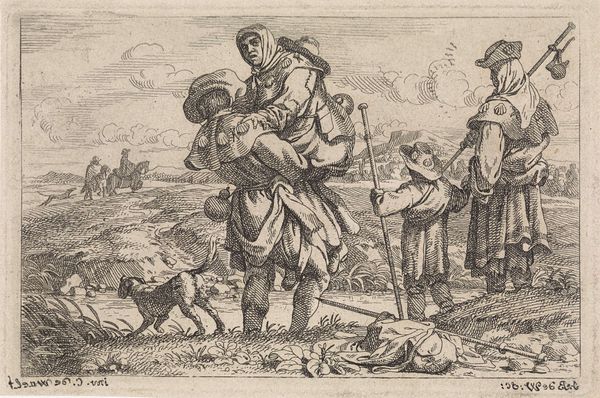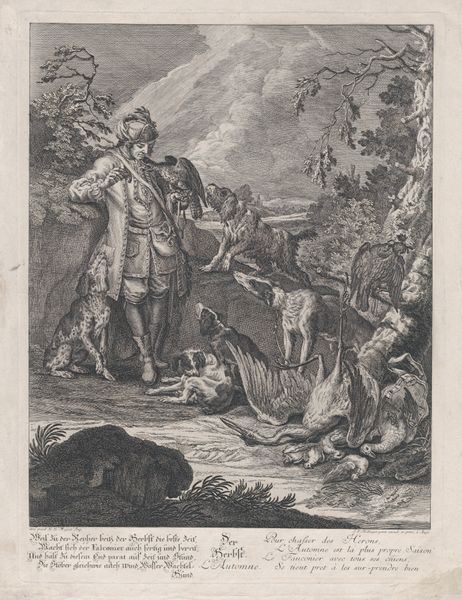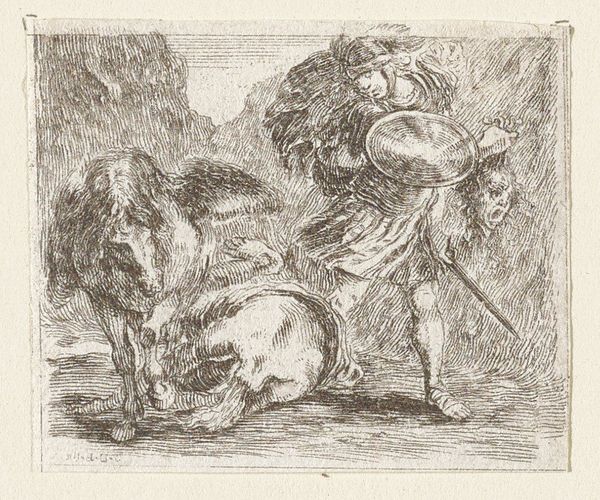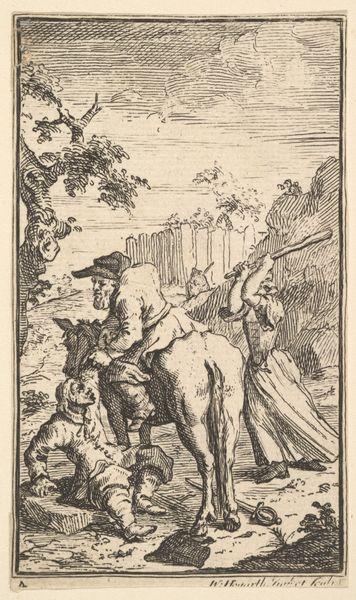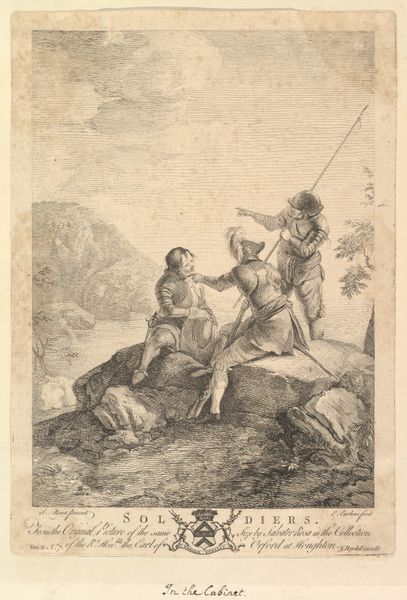
print, etching
#
narrative-art
#
baroque
# print
#
etching
#
sketch book
#
figuration
#
personal sketchbook
#
sketchbook drawing
#
sketchbook art
Dimensions: height 101 mm, width 71 mm
Copyright: Rijks Museum: Open Domain
Curator: Pieter Cornelisz. Verbeeck created this print, "Ruth leest aren op het veld van Boaz", sometime between 1620 and 1654. It is an etching. Editor: The stark contrast immediately gives it a dramatic feel, almost like a stage scene lit with a single spotlight. Curator: Verbeeck, though lesser known than his contemporaries, captured scenes of daily life, often imbued with moral narratives relevant to the Dutch Republic. The choice of etching, a relatively accessible printmaking technique, suggests a broader target audience. Editor: Notice how the composition draws your eye upwards with the gesture of the man on the left pointing, contrasted by the crouching figures busily at work. Semiotics! The objects scattered at the lower register seem to establish grounding. Curator: Considering the biblical title, this print may comment on labor and divine providence. The scene reflects not just a rural landscape but also broader socioeconomic concerns surrounding agriculture, land ownership, and social welfare during that time. Editor: From a structural perspective, the repetitive lines suggesting harvested wheat give it a layered effect which echoes the layering of society it suggests: those working the harvest, and those directing it. It's stark. Curator: These printed images were important ways of disseminating biblical stories and teachings, particularly during a time of significant religious and social upheaval in the Netherlands. One can consider the influence of printmaking shops upon artists, their workshops effectively engaging in assembly-line-like production practices to feed Dutch consumption culture. Editor: Right, that repetition adds depth, and, ironically, makes one think about industrial production. So many repetitive marks! I appreciate how closely analyzing the technique draws me back to considering the meaning. Curator: It reminds us to consider the cultural significance of visual communication and dissemination via these easily reproduced etchings and prints. Editor: Indeed. It gives such perspective on Dutch Golden Age daily life; thank you for bringing "Ruth leest aren op het veld van Boaz" to my attention.
Comments
No comments
Be the first to comment and join the conversation on the ultimate creative platform.
